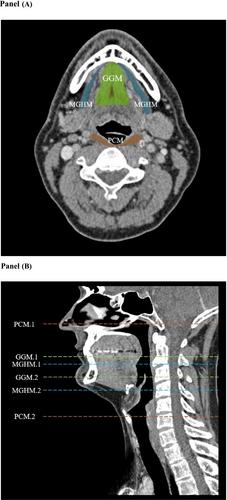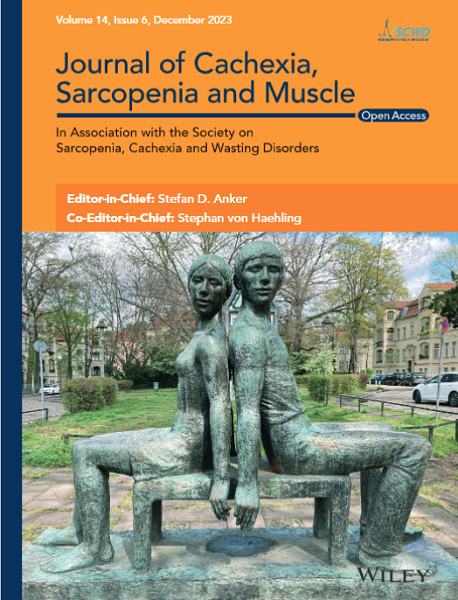A new computed tomography-based approach to quantify swallowing muscle volume by measuring tongue muscle area in a single slice
Abstract
Background
Measuring the swallowing muscle mass with volume measurements is complex and time intensive; therefore, it is not used in clinical practice. However, it can be clinically relevant, for instance, in the case of sarcopenic dysphagia. The aim of the study was to develop a feasible and clinically applicable method to measure swallowing muscle mass.
Methods
Data from 10 head and neck cancer patients were collected from the Oncological Life Study data-biobank of the University Medical Center Groningen. The pharyngeal constrictor, genioglossus, mylohyoid and geniohyoid complex muscles, as well as the tongue complex muscles, were delineated manually on routinely performed head and neck computed tomography scans. Axial and sagittal planes were used for volume and area measurements, respectively. Muscle density measurements were performed with and without Hounsfield unit thresholding. Correlations were assessed by Pearson correlation coefficients, and interobserver reliability was measured using intra-class correlation coefficients (ICCs).
Results
Significant differences were observed between sagittal area measurements with and without Hounsfield unit thresholds for pharyngeal constrictor, tongue complex and the sum of the swallowing muscles (t > 6; P-value < 0.001). Stronger correlations emerged without Hounsfield unit thresholding. Strong positive and significant correlations were found between the total swallowing muscle mass volume and the sagittal area of the tongue complex muscles (r = 0.87, P-value < 0.05) and the sum of the sagittal areas of the pharyngeal constrictor and tongue complex muscles (r = 0.85, P-value < 0.05). The use of the Hounsfield unit threshold weakened correlations. Interobserver reliability was assessed and found to be fair to good for the pharyngeal constrictor muscle (ICC = 0.68, P-value < 0.05), excellent for the tongue complex muscles (ICC = 0.98, P-value < 0.05) and excellent for the total swallowing muscle area (ICC = 0.96, P-value < 0.05).
Conclusions
Single-slice delineation of the sagittal area of tongue complex muscle and pharyngeal constrictor muscle is a promising, fast, simple and clinically applicable method for measuring the total volume of the swallowing muscle mass in head and neck cancer patients without Hounsfield unit thresholding. These advancements and findings would help in the early and accurate diagnosis of definitive sarcopenic dysphagia.


 求助内容:
求助内容: 应助结果提醒方式:
应助结果提醒方式:


